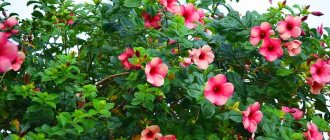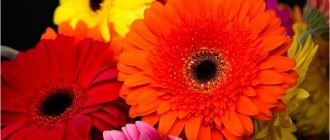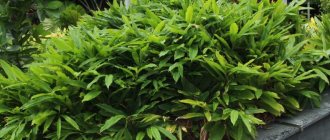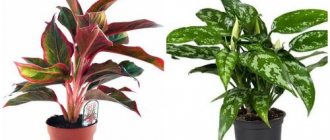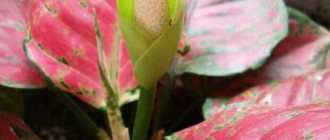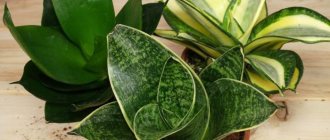Quarantine for new plants
Crassulas purchased from amateurs or in retail chains must first be placed separately from the main collection for 2 weeks in the following place:
- cool;
- shaded (but not dark);
- well ventilated.
Owners should monitor new plants for early signs of disease or pest infestation. Before selling, they are often washed off to get rid of external signs, but the problem remains.
Before sending it to a permanent place, the fat woman needs to be cured.
Money tree diseases
Physiological diseases associated with improper care at home require close attention. Infections are rare, if after purchase there were none on the fat plant, they also appear due to the negligence of the owners.
Functional diseases
They occur when normal life is disrupted under the influence of unfavorable factors or a sharp change in growing conditions. Sometimes, to cure a disease, it is enough to eliminate the source and provide proper care for the tree. If the situation becomes critical, the fat woman may die.
Rotten
Most often, the flower begins to hurt as a result of overwatering; the root is first affected, then the lower part of the trunk softens.
Gradually the disease spreads to the entire fat plant:
- vegetative organs become sluggish;
- darken;
- the main stem softens at the base;
- leaves fall off;
- the branches droop and lie on the edge of the pot;
- the plant dies.
A peat substrate or a substrate containing soil components in a container that is too spacious will turn sour. The fat woman cannot master the entire earthen lump; first it deteriorates along the edge, then in the root area. Organic matter decomposes, begins to smell bad, and sciarids (fungus gnats) appear. It is because of their distribution that careless owners often first pay attention to the problem.
The same thing happens if there is no drainage or bottom holes in the pot.
The cause of rotting of the leaves and stems of the fat plant is often caused by spraying the crown, especially at low temperatures. Then the decomposition process goes from top to bottom, and not vice versa.
Dropsy of leaves (edema)
Appears on the Crassula from increased watering, not necessarily abundant, wetting the lump completely. The problem also arises when the owners irrigate the substrate “a little bit,” but often. Poor lighting is often a contributing factor.
The disease is not accompanied by root rot, which is possible when growing Crassula in gravel, a well-drained soil or peat mixture containing a lot of raising agents. The substrate does not sour, since water does not linger there, aeration is excellent.
The lower, less often the upper, part of the leaf becomes pimply. The color remains green, but the bubbles may take on a grayish tint. The problem is caused by the death of part of the roots of the crassula. Since overwatering does not produce a fatal result due to the excellent permeability of the substrate, rotting did not spread to the entire root, but the consequences remained.
The affected plates will not recover. But they will not turn yellow, fall off, or dry out.
Leaf burn
The disease affects the fat woman:
- exposed to bright light without preparation;
- during morning spraying, when drops of water turn into lenses under the direct rays of the sun;
- if leaves touch hot window glass.
Due to a sudden change in lighting, the plates turn completely red. Areas exposed to high temperatures become whitish or dry, depressed, necrotic areas appear.
Frostbite
Crassula roots may be damaged if the pot is placed on a cold window in winter, especially after watering. Leaf tissues die when touching frozen glass.
Frostbite can be caused by an open window.
Infectious diseases
They appear extremely rarely on the Crassula. The introduction of pathogenic microorganisms is prevented by the strong immunity of the money tree and durable epidermis.
Where do they come from?
Viruses, bacteria and fungi enter the plant:
- together with garden soil - it is difficult to completely disinfect it at home;
- from the dirty hands of the owners;
- when working with non-sterile garden tools;
- spores are transferred to the Crassula by pets walking on the street;
- They fly in with the wind through an open window or vent.
Unsanitary conditions favor diseases, which in principle should not exist in the house.
What contributes to the spread
For the development of most infections, depending on the type:
- high temperature and humidity;
- some peak in the cool, but again, when there is a high concentration of water in the air or soil.
Typically, infectious diseases are accompanied by physiological ones, so it is difficult to determine them.
For normal caring for Crassula, the humidity should be low. Weakened plants with weak immunity and constantly under stress are most often affected.
Rare infections
Ordinary lovers of indoor flowers and experienced cactus growers who grow succulents at home and not in greenhouses rarely encounter infections on the crassula. But you need to know that the money tree can hurt:
- downy and true powdery mildew;
- septoria;
- black spotting;
- tracheomycosis.
Infectious root rots
A group of fungal diseases begins with damage to the underground part. Sometimes the plant dies without even having time to turn yellow and shed its leaves.
The reason for the appearance is a violation of agricultural technology:
- the owners bring contaminated soil from the garden;
- poorly processed or not even attempted to disinfect;
- they plant a fat plant in it;
- allow the substrate to become soaked.
The disease is caused by three genera of mushrooms, which can only get into the pot with garden soil:
- Pythium is from the group of oomycetes, which includes the blackleg. Lives in soil taken from nightshades, wheat, root crops, tobacco, and beans. Forms white fluffy spores. If seedlings are affected, it is useless to fight the disease.
- Rhizoctonia is a soil phytopathogenic fungus with felt-like mycelium. The spruce tree gets sick, the seedlings die, and the adult plants lie down.
- Late blight (Phytophthora). It gets into the house with soil from nightshade crops. The disease begins when the soil and air become waterlogged, coupled with sudden changes in temperature. On a money tree, the first manifestations are not the withering of the leaves, but the appearance of brown pimples that quickly increase in size.
Possible problems when growing Crassula
If you do not follow the rules for caring for your money tree, you may encounter various troubles.
Silvery coating
A light coating on the leaf blades appears due to high humidity and cold air. These are excellent conditions for the development of powdery mildew or mealybug attack.
A silvery coating on Crassula leaves indicates the presence of a fungal disease - powdery mildew.
Green bumps
Small growths on the plant appear as a result of overwatering. It is necessary to adjust the plant's moisture. In addition, it’s worth taking a closer look - maybe the scale insect has chosen the Crassula.
Red or purple color
The leaves acquire an uncharacteristic color if they are exposed to direct sunlight (the underside of the leaf is especially susceptible to it). Then the leaf blades turn red (or turn purple), lose their elasticity, and begin to crumble. Also, a change in color indicates an overabundance of fertilizers.
Purple leaves of Crassula are a sign of oversaturation of the plant with fertilizers
Leaves wither and turn yellow
The leaves become lethargic and turn yellow due to insufficient watering and poor lighting. This is easy to fix. However, the problem could be much more serious - perhaps the plant is affected by root rot.
Crassula leaves dry out due to lack of moisture or sunburn
The tree is losing its leaves
Excessive humidity very often leads to the fact that the leaves of the fat plant become lethargic, lose color, and then fall off. It is worth noting that a lack of water also leads to this result, so when watering it is important to feel the “golden mean”. It is necessary to use warm, settled water, since cold water will also cause the Crassula to shed its leaves.
Money tree leaves can fall off due to both under-watering and over-watering.
Brown or brown spots
Dry brown or brown spots are a result of lack of moisture. When the earthen coma is overdried, the leaves dry out, and then the plant loses them. Another reason is spraying the plant. Crassula does not need this procedure. A bacterial or fungal infection that can cause the plant to rot can also cause spotting.
Root or stem rotting
The root rots due to excessive moisture in the soil in the pot. This can be detected by removing the flower from the container. A rotting stem at the base becomes sticky and acquires an unpleasant odor. It is very difficult to save such plants.
Root rot can be caused by overwatering or low temperature
Stunting (or growing upward)
The Crassula begins to grow upward and stretches out in poor light. The same thing happens with abundant watering in winter. You need to move the plant to a brighter place. To prevent the crassula from becoming one-sided, it must be rotated periodically. Pinching new shoots will help form a beautiful, even crown and make the trunk stronger and thicker. Stunted growth indicates the pot is too large.
Soft and thin leaves
Soft, thin leaves signal overwatering. It is necessary to immediately reduce it and carry out the next one only after the earthen lump in the pot dries out. Also, too much soil density can affect the condition of the leaves. Attacks by spider mites and scale insects also make the leaves weak.
Thin leaves of the fat plant indicate that the plant does not have enough air; water stagnates in the bowl due to too dense soil
White dots
Leaves become covered with white spots when humidity is very high. If the plant is provided with proper conditions, the small specks will soon disappear.
White dots on Crassula leaves are absolutely normal; the plant thus reacts to increased humidity
Leaf burn
Crassula loves sunlight, but it should be diffused, especially during the midday hours. Direct exposure to rays can cause a leaf burn - then it will wrinkle, become covered with dark spots, and dry out.
Small leaves
Crassula leaves become smaller due to lack of light and nutrients. It is necessary to adjust the regime of watering and fertilizing, and the plant will respond with a beautiful crown of elastic, large leaves.
Crassula pests
Larvae and adult insects on a money tree are easy to detect if the owners inspect it regularly. Pests appear infrequently, since it is difficult to bite through the covers of a healthy flower.
There is information that the fat plant can be affected by aphids, but it was not possible to find even a photo on the Internet. The pest is unlikely to pierce the epidermis if the tree has not lost so much turgor that the leaves become like rags.
Spider mite
This is not an insect, but an arachnid. Loves dry air and high temperatures, drinks Crassula cell juice. It is difficult to see the pest with the naked eye, but the results of its vital activity are clearly visible:
- thin web;
- a coating similar to coarse dust on the back of the sheet;
- straw-colored pinpoint punctures at the bite sites;
- with a strong spread of the pest, the entire plate of the fat plant turns yellow unevenly;
- Over time, the leaves become thinner and fall off.
Shchitovka
A sedentary pest, difficult to destroy due to the waxy coating covering the shell. It looks like an oblong growth or plaque, tightly clinging to a vegetative organ. To remove scale insects mechanically, the pest has to be scraped off.
The color blends in with the plant or is dark. Lives in colonies. Draws out intercellular fluid from the fatty acid.
Mealybug
It is clearly visible, settles in the axils of leaves, sucks juices from vegetative organs. The clutches look like lumps of cotton wool made of waxy white threads. The body is oblong, as if sprinkled with flour; thin legs are visible on the sides.
More mobile than the scale insect. It has soft covers, which makes it easier to fight the scale insects.
Thrips
An insect with an elongated dark body up to 2 mm, the mouthparts are of the piercing-sucking type. The pest flies poorly, but runs well.
Settles from the underside of leaves. The bite sites are initially straw-colored or watery, then merge into brown spots. The affected plates fall off over time.
Nematode
A dangerous pest, fighting it rarely ends in success. At the slightest suspicion, it is recommended to get rid of the fat plant and the pot of soil.
May affect the underground part or shoots:
- in the first case, in order to detect the pest, you need to examine the root - it will be covered with galls (growths);
- stem nematode causes deformation of the plates and cracking of the shoots.
The main diseases of Crassula and their treatment
The money tree is one of the most popular indoor plants. The flower is unpretentious in care, but despite this, you still need to follow some rules. If watering, lighting, and fertilizer are not maintained, the plant quickly loses its attractiveness. Most often, improper care is reflected in the condition of the leaf blades.
Silvery coating on the leaves of Crassula
Initially, the plaque appears on the stems, gradually spreading to the leaves. If nothing is done, they will become flat and lethargic in a short time.
The main causes of this disease:
- Excessive watering. A large amount of moisture can cause rotting of the root system and above-ground parts of the plant. This is why the leaves become soft and the trunk and branches become deformed.
- No drainage layer. The absence of pebbles or crushed red brick can cause stagnation of liquid in the lower part of the flowerpot. This leads to the development of fusarium rot.
- Mealybug. This is a common resident of the Crassula. It likes to be located in the axils of leaves and on the roots. The mealybug feeds on plant tissue, which leads to the rapid death of the flower. You can identify the insect by its white coating, which looks like small pieces of cotton wool.
If the cause of the white plaque is a fungus, then you can get rid of it with the help of fungicides. In case of mild damage, only the leaves are treated with the prepared mixture. If the plant begins to deform, then spray the edges of the flowerpot and the surface of the soil with a fungicide. You can also transplant the fat plant into a new container with fresh substrate.
It is easy to remove insects from leaves using insecticides. In this case, each leaf should be processed.
It is recommended to remove all stems and leaves that are deformed. If ⅔ of the tree is affected, the tree should be completely destroyed.
Soft leaves of Crassula
This can be caused by overwatering, lack of light and incorrect air temperature readings. The first thing to do is eliminate the cause of the disease. Only after this can you begin treatment.
The plant should be pulled out of the flowerpot and its root system thoroughly examined. If there are even small rotten areas, they must be removed. Affected leaves are also trimmed. All places must be thoroughly washed under running water, and the cuts must be sprinkled with charcoal.
The plant should only be replanted into a new substrate. After the tree is placed in the soil, it will need to be thoroughly watered with carbendazim. The fat plant should be kept in a window that is well lit by the sun.
During hot periods of the day, it is recommended to shade the tree. Start irrigation only after the flower has acquired a healthy appearance.
Black spots on Crassula
The main reason for the appearance of dark circles is exposure to direct sunlight on the leaves. These are so-called burns, which can only be prevented by moving the flowerpot to another place. To restore the tree's attractive appearance, the affected leaves must be removed.
The tree withers and turns yellow
Such symptoms indicate that the plant is suffering from high air temperatures. Most often, wilting and yellowing is observed in the summer. Therefore, in order for the fat woman to feel good, you should move it to the balcony, loggia or garden. You can change the location of the money tree from the beginning of spring. But do not forget that it does not really like drafts, shadows and sunlight.
The tree has stopped growing
Slow growth can be caused by several reasons. The first thing that causes a flower to stop growing is a small flowerpot. Therefore, the plant needs to be transplanted into a large container as quickly as possible.
Also, the “attack” of pests leads to slow development. Some types of insects are found in the root system. Seeing them with the naked eye is quite problematic. Therefore, during transplantation, the roots must be cleared of soil and then placed for some time in a weak solution of potassium permanganate.
The shoots begin to bend
This is a common problem with fat cats. It occurs mainly due to an incorrectly chosen pot. Since the tree’s root system is superficial, the container should be chosen to be wide, but not very deep. The pebbles that cover the top layer of soil will give stability to the fat plant.

